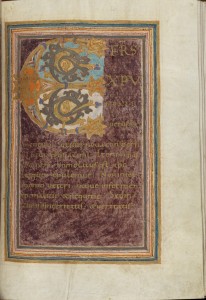A blue pigment obtained by purifying ground lapis lazuli stones
This precious pigment was derived by a lengthy process which enabled the extraction of the bright blue mineral lazurite, a complex sulfur-containing sodium aluminium silicate (Na8-10Al6Si6O24S2-4), from lapis lazuli stones mined in Afghanistan. Its exotic provenance earned the pigment its common name, which means 'beyond the sea'. Despite its cost, ultramarine was lavishly used by medieval and Renaissance illuminators.
Synthetic ultramarine, manufactured since c.1830, has the same chemical composition as the natural product. The two cannot be easily distinguished using the analytical methods employed for this project. However, unless there were specific reasons to suspect a modern origin for the ultramarine used in one of the manuscript (such as clear damage to the paint layer, which may have prompted a past 'restoration' treatment), it is assumed here that the pigment identified is natural ultramarine.






